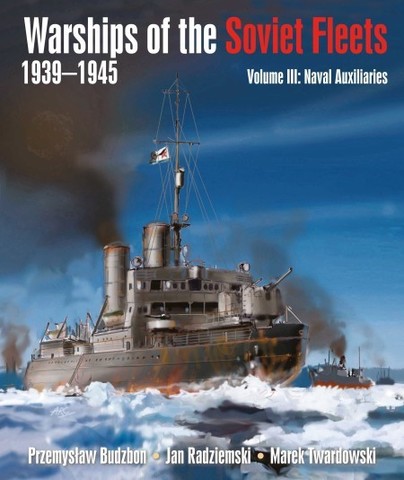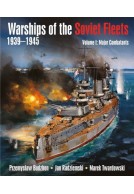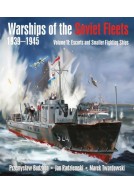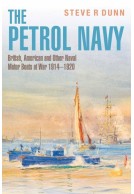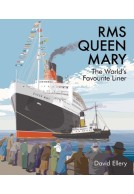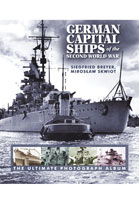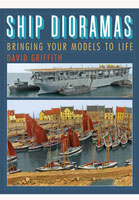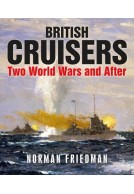Warships of the Soviet Fleets, 1939-1945 (eBook)
Volume III: Naval Auxiliaries

File Size: 77.4 MB (.epub)
ISBN: 9781399022828
Published: 30th July 2023
| Other formats available | Price |
|---|---|
| Warships of the Soviet Fleets,… Hardback Add to Basket | £45.00 |
Seventy-five years after the end of the Second World War the details of Soviet ships, their activities and fates remain an enigma to the West. In wartime such information was classified and after a brief period of glasnost (‘openness’) the Russian state has again restricted access to historical archives. Therefore, the value – and originality – of this work is difficult to exaggerate. It sees the first publication of reliable data on both the seagoing fleets and riverine flotillas of the Soviet Navy, listing over 6200 vessels from battleships to river gunboats, and mercantile conversions as well as purpose-built warships.
This third and final part of the series includes all the ships in naval service that were not frontline fighting vessels. Despite auxiliary status, these were not insignificant ships – indeed the icebreakers were the largest vessels built by the USSR before the war and carried so much prestige that every leading member of the Soviet regime wanted their name on one. Apart from the obvious fleet support types – oilers, tugs and depot ships – this volume also covers unsung heroes like the salvage fleet, highly significant in the 1930s for generating much-needed foreign currency and later essential to the war effort, allowing so many sunken Soviet warships to be returned to service. Another major feature of this volume is the first clear and comprehensive listing of ex-mercantile transport ships, their periods of service and ultimate fates. Even harbour service craft are included, right down to the humble ‘heaters’ that supplied warmth to icebound warships in the depth of the Russian winters.
This volume concludes with a number of important appendices on subjects like weaponry and a massive cross-referenced index that will allow readers to differentiate between ships of the same name and to track every name change.
This is undoubtedly one of the most important naval reference works of recent years and will be welcomed by anyone with an interest in warships, the Soviet Navy or wider maritime aspects of the Second World War. Furthermore, as recent Russian actions appear to revive Soviet-era aspirations, this book offers both new insights and valuable background of contemporary relevance.
"...this collection of volumes is likely to be the definitive exposition of the Soviet fleets and their warships during the Great Patriotic War for the foreseeable future. The authors have set an extremely high bar for future researchers in this field."
Nautical Research Journal - Volume 69 (2024)
"This volume is undoubtedly one of the most important naval reference works of recent years and will be welcomed by anyone with an interest in warships, the Soviet Union, or wider maritime aspects of World War II"
Ships Monthly - July 2024
Recommended without any reservation.
Military Model Scene
Read the Full Review Here
"...outstanding series..."
The Naval Review
Read the full review here.
As featured in
The Bookseller, Jan 23
About Przemyslaw Budzbon
THE AUTHORS grew up in Poland under Soviet domination and were forced to learn Russian, which guaranteed a profound understanding of Soviet-Russian thinking and the smallest nuances of its history. Their experience is varied but pertinent: Przemyslaw Budzbon worked closely with officers of the Soviet Navy for a dozen years, as a constructor of Soviet warships; Marek Twardowski, a curator at the Polish National Maritime Museum, has an outstanding background in professional maritime history; while Jan Radziemski, thanks to a wide network of contacts among historians and maritime enthusiasts in Russia, was able to reach information and sources unavailable to official researchers.
About Jan Radziemski
THE AUTHORS grew up in Poland under Soviet domination and were forced to learn Russian, which guaranteed a profound understanding of Soviet-Russian thinking and the smallest nuances of its history. Their experience is varied but pertinent: Przemyslaw Budzbon worked closely with officers of the Soviet Navy for a dozen years, as a constructor of Soviet warships; Marek Twardowski, a curator at the Polish National Maritime Museum, has an outstanding background in professional maritime history; while Jan Radziemski, thanks to a wide network of contacts among historians and maritime enthusiasts in Russia, was able to reach information and sources unavailable to official researchers.
About Marek Twardowski
THE AUTHORS grew up in Poland under Soviet domination and were forced to learn Russian, which guaranteed a profound understanding of Soviet-Russian thinking and the smallest nuances of its history. Their experience is varied but pertinent: Przemyslaw Budzbon worked closely with officers of the Soviet Navy for a dozen years, as a constructor of Soviet warships; Marek Twardowski, a curator at the Polish National Maritime Museum, has an outstanding background in professional maritime history; while Jan Radziemski, thanks to a wide network of contacts among historians and maritime enthusiasts in Russia, was able to reach information and sources unavailable to official researchers.







